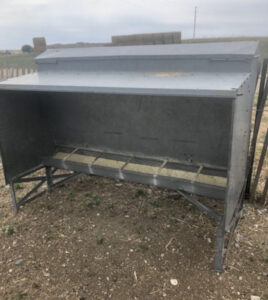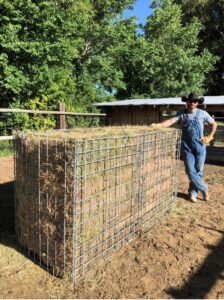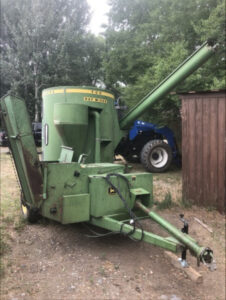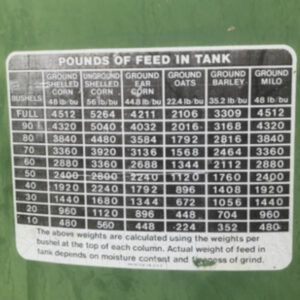Adjusting Creep Rations & Paddock Rotation
#bfrdpwy #aginternship #RightRisk

Finishing up this past week with the Growing-WY internship we have continued to creep feed bum lambs and have started weaning about a dozen lambs. We have also made some adjustments on our creep ration in order to better suit the nutritional needs of the lambs during weaning. As well, we have been continuing to bale hay and rotate the paired ewes from ditch bank to the corral to keep the ewes and lambs from continuously eating where they are defecating.

Rotating ewes and lambs from different paddocks and even to the ditch banks is a crucial part of sheep flock management as I have discussed in past summaries for many reasons. One reason being is that it can control and break up the parasitism cycles by forcing ewes from area to area, keeping the ewes from feeding in areas that they have defecated in. This is important because if the sheep are kept in the same areas for too long the soil [becomes]because wet and full of feces which is a perfect place for worm loads to rise at exponential rates, resulting in passing of parasites from ewe to ewe or even lamb to lamb.

Again, as I have discussed in the past, in farming it is vital to properly manage the areas that the sheep are grazing to get the most out of your feed. Anything you can do in terms of feed to mitigate cost is better for pasture development as well as financially. Another thing we [are]have working on this week is changing up our creep rations a bit. We use soybean meal, alfalfa, mineral, molasses, corn, and a fat substance in our creep ration. In our earlier version we were not using the fat substance which caused the creep to be quite dusty resulting in the lambs consuming less and drinking more water. We also calculated a bit more alfalfa than necessary which was causing some of the lambs to [have]be runnier stools. In the latest batch we lowered the alfalfa percent from 15-20% to 10%, and added a higher percentage of corn. With the addition of the fat, the creep isn’t dusty and gives the creep a smell that seems to better attract the lambs. We are hoping this ration works better but we will observe how the lambs react to it and change accordingly.

Continuing, I have learned just how important creep feeding and the fine adjustments you make to the ration are to how fast and well the lambs develop. This is also essential because the faster you can develop the rumen in a lamb the faster you can put them on pasture with supplements or even sell, which in turn lowers the amount of cost when raising lambs. The longer it takes to ween the more money you must invest in the lambs via milk replacer, creep, etc. Some questions that I have is the return and market of lambs this year as well as how drastically the market can change depending on the time of year. Also, what weight is optimal for selling replacement lambs.
As we have finished up this past week, I have continued to learn so many small but important lessons when it comes to raising lambs. I have also continued to get more time in on the equipment needed to run a sheep flock, which is great because I don’t have the equipment or people [back home] to teach me how to run certain pieces of equipment such as swathers, balers or even grinder-mixers. With the knowledge I have taken [in] this week, I can better help family and friends back home with farm equipment and even the raising of livestock.
Submitted by: Elijah Richardson
Edits by: GrowinG Internship Team

